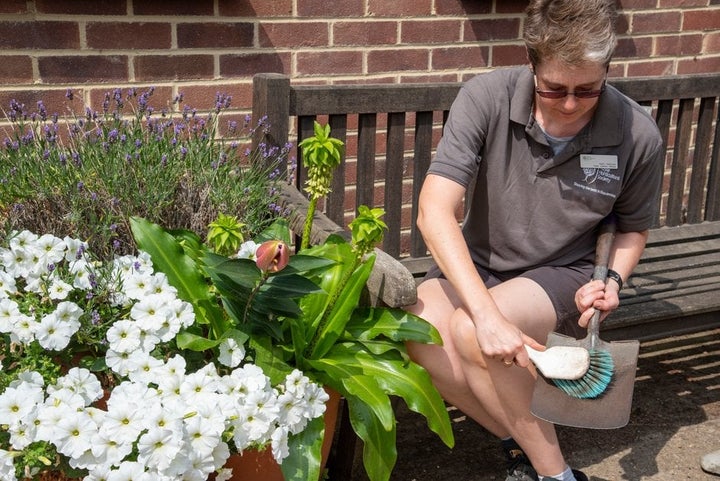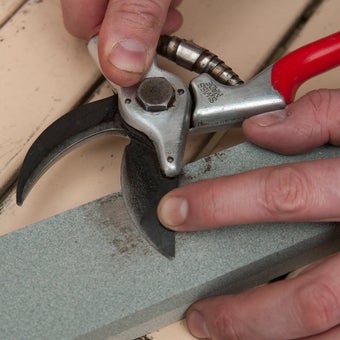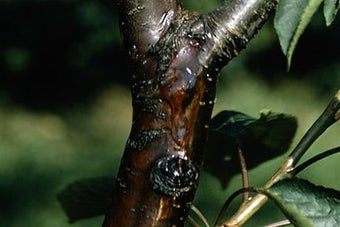
Quick facts
Tools kept clean and in good working order are more efficient and safer to use
Ideally, garden tools should be cleaned after every use
Soil on boots and shoes can spread soil borne diseases within your garden and beyond
How to clean hand tools
Cultivation tools (spades, hoes, forks, rakes and trowels)
- Use a stiff scrubbing brush to remove any soil from the blade and shaft
- Extremely muddy tools may need a wash down with a hose before drying with an old towel. Drying prevents wooden handles from absorbing water and swelling, and stops metal from rusting
- Traditionally, to help prevent rusting, tools were oiled with a thin protective film of general purpose oil after cleaning. Many modern tools are made from stainless steel, which is less likely to rust. However, this does depend on the quality of the metal. Occasional oiling may be required.
Top Tip
To serve as a reminder and for convenience – keep a brush and an old towel near where you store your tools.
Cutting tools (secateurs, knives, loppers, pruning saws and all types of shears)
Blades of pruning tools become gummed up with the of the plants you are pruning, attracting grime to the blade. This build up affects performance, causing blades to stick together over time.



- Clean off dried-on sap with a nylon pan scourer or wire wool. Use a penetrating oil and water-displacing spray such as WD-40 to help loosen the grime
- Once the metal is clear and smooth, wipe off the remaining spray with a clean cloth
- Tighten any loose working parts and drop some oil into the central pivot point, opening and closing it to work the oil in
- Store in a clean dry place
Top Tip
Wear gloves when using oil products and wire wool to prevent skin irritation or damage.
How to sterilise hand tools
is important for preventing the spread of diseases such as Phytophthora, bacterial canker and box blight to name a few. It is important to clean all used tools that have come into contact with contaminated soil and plant material. Good hygiene for propagation tools is essential too.


- Stop soil transfer by brushing cultivation tools like spades at the site
- Apply a suitable disinfectant such as Jeyes fluid, Citrox or Propellar to all used blades. To successfully kill pathogens, leave for 15-20 minutes before wiping off
- Dry with an old towel and then oil, remembering that any brush or cloth should also be disinfected
- Don’t forget your boots, remove contaminated soil and disinfect the soles












